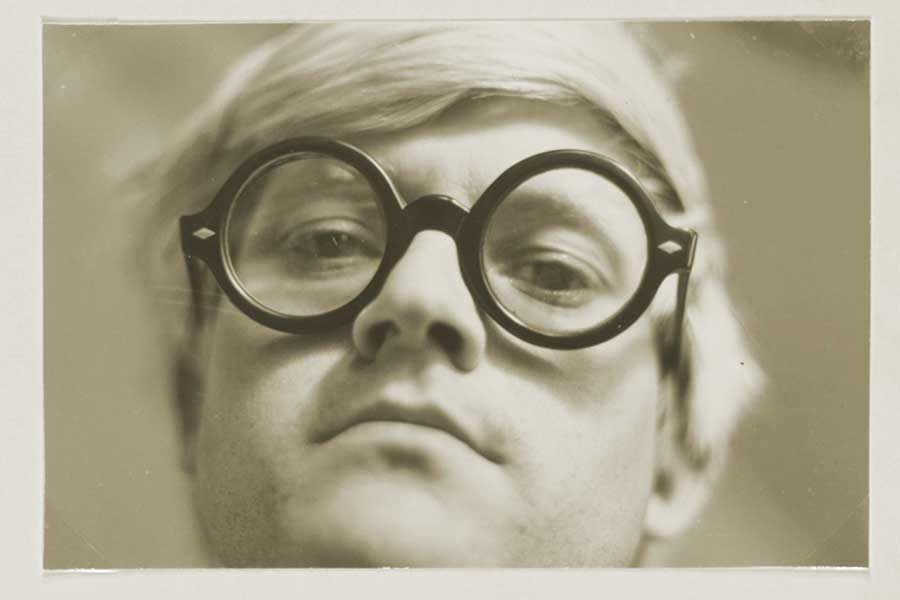Gay British artist David Hockney has been the subject of a feature documentary before — 1973’s “A Bigger Splash,” about his breakup with Peter Schlesinger — but Randall Wright’s new film “Hockney,” opening May 20 at Ritz Theatres, is a remarkable, intimate portrait of the artist.
Wright approached “Hockney” with the same visual sense the artist used to create his paintings and drawings. He peppers each section of the film with a quote by Hockney that reveals something about the artist’s way of seeing things.
“I wanted to construct a portrait of his life in the same way David makes his painting ‘Mulholland Drive,’” the filmmaker said via Skype from London.
“Hockney” does this splendidly, showcasing the bright, bold colors of the artist’s work, life and art decade by decade.
“I wanted to tease out how much of his personality and art is from the upbringing in the north of England and the idealism of the post WWII, [living in the] age of AIDS or his not finding a simple love or home,” Wright said.
“Hockney” shows its subject’s early life in a claustrophobic (but supportive) house in Bradford, Yorkshire before moving to the sunny, wide-open space of Los Angeles, after a brief spell in New York.
“Hockney’s great achievement was to go to L.A.,” Wright said. “The air quality alone is better than the damp and cold in London. When he painted his early gray East Yorkshire landscapes, he was doing it from memory in L.A. He left Bradford, a cold place where he was inhibited and where his sexuality would cast a shadow, for L.A., where he had a liberal dimension, a bohemia. It was a warm place for him to reinvent himself.”
Los Angeles is also where he created his famous painting “A Bigger Splash,” and in “Hockney,” Wright unpacks the brilliance and power of the image. The painting has a border that prevents viewers from walking on the otherwise inviting diving board. The splash depicted would last a few seconds in real life, but it took Hockney a week to paint it. And while the painting depicts a familiar space, there is something deeper behind the appealing surface.
“It’s a powerful image,” Wright said. “It’s warm, it’s a swimming pool, yet at the same time, there’s a detachment, a suspension of time. The diver isn’t going to come up — he’s beneath the water. There’s something complex and paradoxical about his playfulness.”
“Hockney” captures the painter’s difficulties finding love, friendship and artistic direction at various times in his life with deep emotion. Significantly, the film is more of a diary of the artist’s life than a condensed or conventional biography.
Wright explained he charted Hockney in the film “from emotion to emotion.” He cited the example of the artist’s “Blue Guitar” stage, a creative period he enters after Peter Schlesinger leaves him.
“I wanted to compartmentalize Hockney’s work from his analytical asking of what a picture is to what he feels. David wanted to make a picture that’s transparent to his emotions. I think his most creative art — ‘Mulholland Drive,’ ‘A Bigger Splash’ — is what happens when that comes together.
“There’s more anguish — not anger, not depression — in his work. That’s what makes his painting extraordinary; it involves an emotional response,” Wright added. “And he’s a great draftsman. In the painting of his mother with amazing blue eyes, he sees a beautiful human being, with no judgment. He was able to reproduce images without embarrassment that represent his sexuality.”
The filmmaker explained that he took the same approach in “Hockney,” and admits to deliberately including “the odd willy” to emphasize beauty without judgment. The nudity in “Hockney” is significant because a story Hockney describes of having nudie magazines confiscated by a customs officer is revealing in another way. The artist, the film suggests, had the images of the naked male models in mind when he represented them in his erotic paintings of nude surfers in a pool.
“The point about making a work of art by eye, you are seeing something somewhere, it may be in front of you but it’s also in your mind’s eye,” Wright said. “A painting is a collection of visual recognitions.”
Given how close the filmmaker is with his subject, was there anything he discovered about his friend in making the film?
“In a way, you discover something new when you look carefully at the pictures,” Wright responded. “What surprised me was the degree to which David is lonely, and his art is a gift to us. Whatever happens, he keeps making the pictures, and is hopeful. That sounds sentimental, and he is sentimental, but it is surprising that someone so successful and who has lots of friends is a bit isolated. It has something of him being a romantic artist who is caught in a post-modern, cynical world. He has an innocence about him. My film is an attempt to make a picture of him. It’s not definitive, but you fall in love with his way of seeing.”
